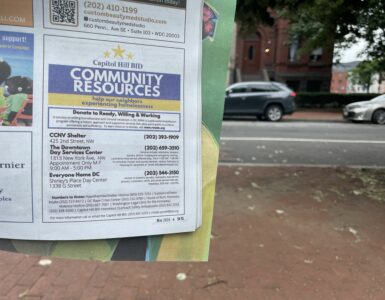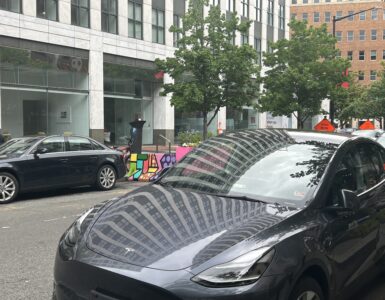
Robert Athmer is a 10th grade geometry and special education teacher at Columbia Heights Education Campus (CHEC). He is four weeks into distance learning and his students are participating and engaged more than when they were in physical classrooms before the pandemic.
“I think we’re tapping into a lot of kids and reaching more kids than we could inside the building where we’re scramming around the floors and running room from room,” Athmer said.
With the high participation from his students, Athmer said he feels like he’s in a physical classroom.
“I’m very proud of our kids for showing up and logging on. I’ve seen about 85% to 90% attendance rates which are phenomenal.”
Laura Freshley, another CHEC teacher, agrees with Athmer.
“I’ve had more engagement, higher work quality, better student turnout in terms of attendance,” Freshley said. “It’s all been better for me since we’ve done virtual learning these last four weeks.”
A teacher since 2010, Athmer and other teachers weren’t provided with resources to help ease the transition of online instruction when the pandemic hit. They were required by CHEC to adapt to the transition on their own.
“They relied on us, the experts and the teachers to come up with a ‘virtual game plan’ for students,” Athmer said.
Most of his summer consisted of creating schedules and modifying lesson plans to gear up for the school year.
On Sept. 17, Mayor Muriel Bowser held a press conference announcing she expects students to return to public and charter schools starting Nov. 9, according to Washingtonian.
Athmer said his students enjoy the virtual learning model but the main challenge right now is “bringing to life” the learning process and keeping the students interested in the lessons.
Some SPED students need tactile tools, paper-based materials or videos to watch so they can better interpret lessons, Athmer said. If students need smaller items like pencils, paper or highlighters, he usually sends them in the mail.
“It simply depends on what teachers need to provide students. Mailing a letter or a few altered worksheets is easy, but if a student needs a laptop, or a hotspot or bigger things like notebooks or calculators, a drive-by is maybe best, especially if you live close to a student,” Athmer said.
CHEC provides teachers $200 for supplies every year but the money was not adjusted for distance learning, Athmer said. With the money, Athmer bought envelopes, rulers, protractors, pens and highlighters.
Freshley said her students have mild to moderate learning disabilities.
In addition to more engagement, Freshley believes her students have easier access to their instructors and health advisors through the click of a button.
“In terms of accessibility, my students have been able to have access to not only me, their special education teacher but to their social workers, therapists and speech-language pathologists.”
Transportation used to be one of the main issues when students were in physical classrooms, Freshley noticed. Some students didn’t have transportation to school and were often not able to attend class because of it.
“Now students don’t have to worry about missing class or being late,” Freshley said.
But not all teachers are seeing the same results and not all teachers are enjoying virtual learning. Michael Dettloff, a teacher at Jefferson Middle School Academy is sometimes stuck creating lesson plans till 9 or 10 p.m.
Dettloff said teaching online is “a little more stressful.” He teaches math and science to seventh and eighth-grade students and is also a mentor for two teachers.
“I think the students that I teach are not getting the full benefit of online learning but we are starting to see some success with assessments,” Dettloff said.
Dettloff said some of his students are thriving in the virtual learning environment. However, he would still prefer an in-person learning environment to virtual.
“But only when it’s safe,” Dettloff said.















Add comment